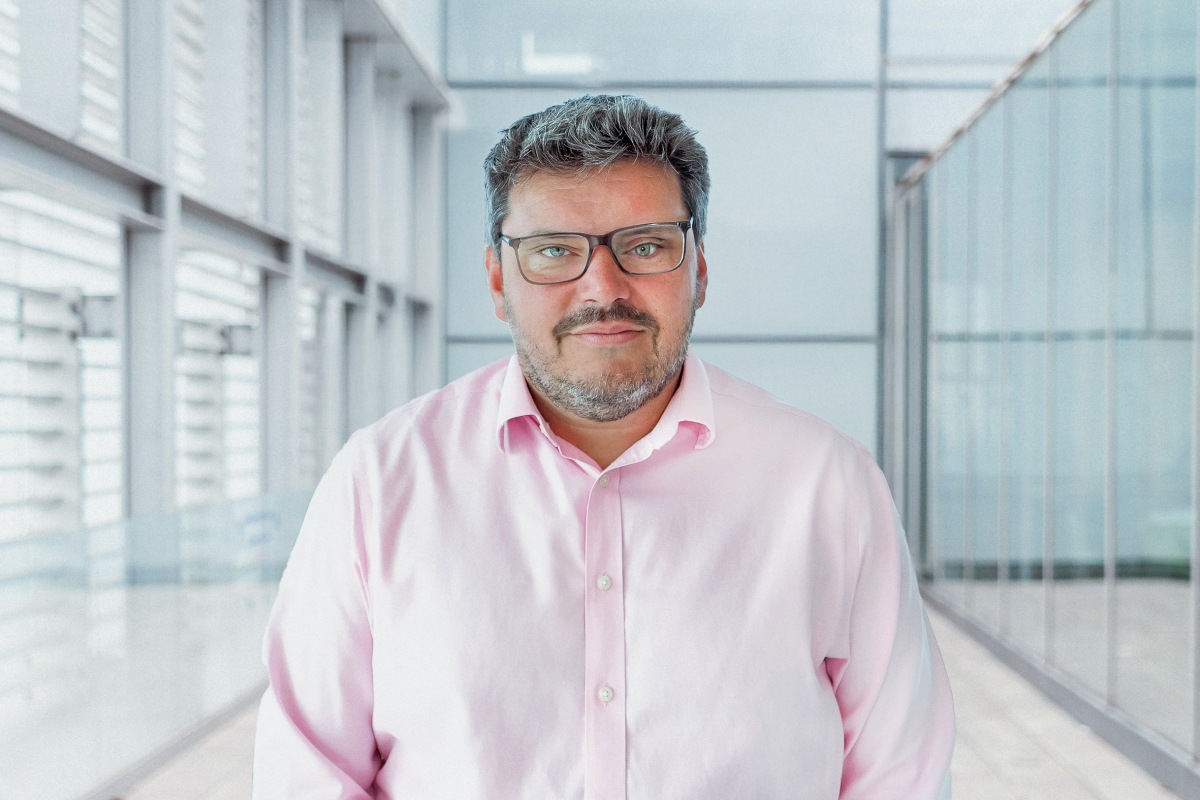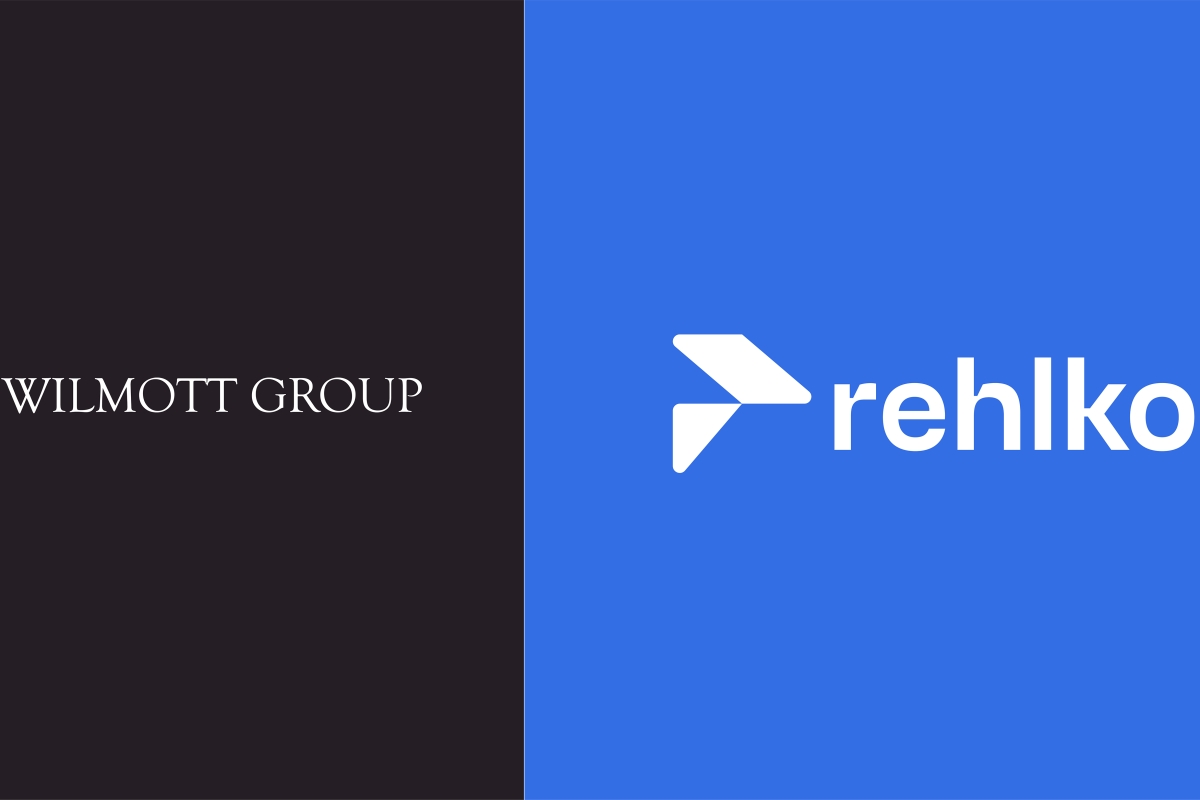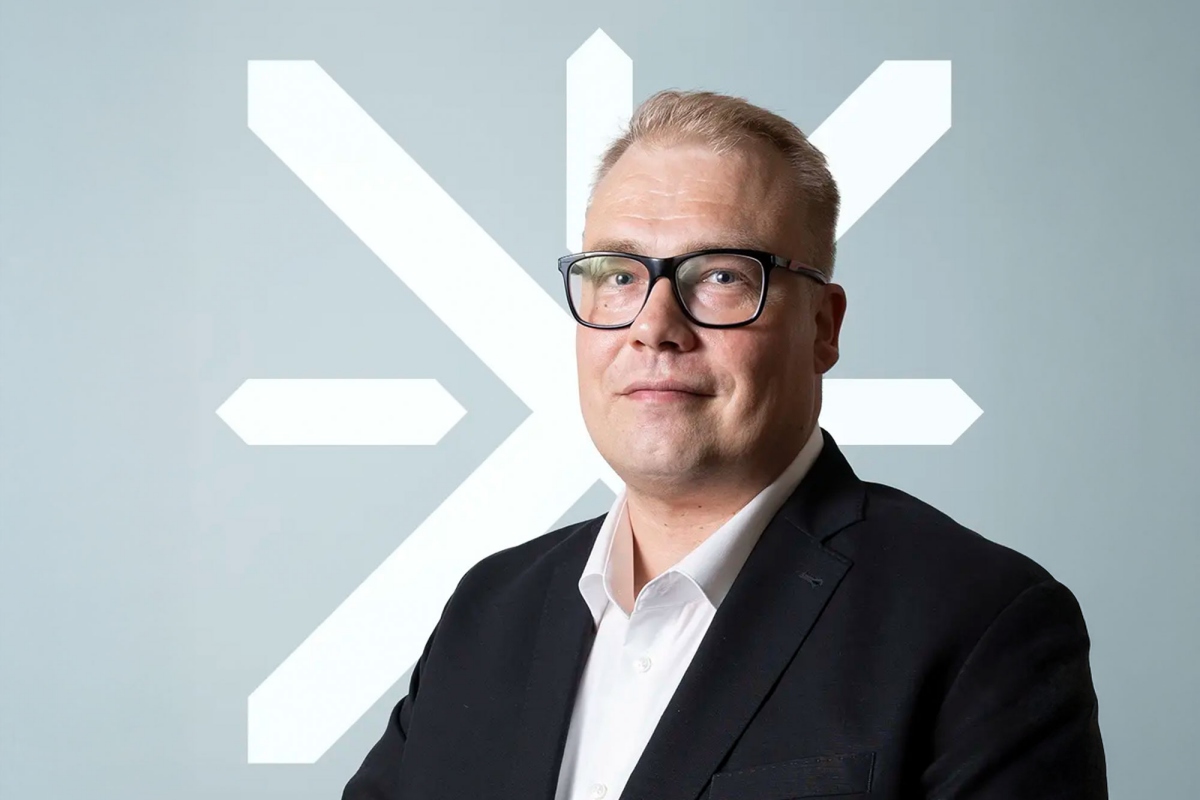Insights into Data Centre Investment & Market Growth
Data Centre Business News and Industry Trends
Insights into Data Centre Investment & Market Growth
News
DC automation market to surpass $50.2bn by 2034
As reported in the latest study by Global Market Insights, a market research and consulting company, the data centre automation market is set to grow from its current market value of more than $11.4 billion (£8.47 billion) to over $50.2 billion (£37.3 billion) by 2034.
This remarkable growth is driven by the rising adoption of cloud services, social media platforms, video streaming, and the proliferation of IoT devices across industries.
What's happening in the market?
As organisations shift towards cloud-based infrastructure and digital storage, the need for efficient and automated data centre operations has become paramount. Automation not only improves operational efficiency but also reduces human errors, ensuring seamless management of vast amounts of data.
With increasing data complexity and volume, businesses are turning to advanced technologies like machine learning (ML), artificial intelligence (AI), and cloud computing to enhance scalability and performance. These technologies optimise system processes, minimise downtime, and support predictive maintenance, allowing companies to stay competitive in a rapidly evolving digital landscape.
Moreover, the growing emphasis on cybersecurity and data protection is pushing organisations to implement automation in data centres, ensuring real-time threat detection and secure data handling.
As more industries adopt hybrid and multi-cloud environments, the demand for data centre automation solutions is expected to surge, paving the way for innovative advancements in automation technologies.
Government initiatives promoting the adoption of digital infrastructure and cloud technologies further strengthen the market, making data centre automation a critical component of modern business strategies.
The data centre automation market is primarily segmented into solutions and services. The solution segment dominated the market with a 60% share, generating $7 billion (£5.2 billion) in 2024.
Automation software helps organisations optimise resource allocation, automate routine tasks, and increase the uptime of data centres, ensuring seamless operations. As businesses strive to enhance operational efficiency, the demand for advanced solutions that enable real-time data management and workload automation continues to rise.
Meanwhile, the service segment is growing rapidly as organisations seek expert guidance and ongoing support in implementing and maintaining automated systems. As technological advancements accelerate, companies rely on expert insights and strategic consulting to maximise the value of their automation investments and ensure long-term success.
In terms of deployment mode, the data centre automation market is divided into on-premises and cloud-based solutions. The cloud segment held a 57% share in 2024, driven by the growing preference for remote accessibility, security features, and flexibility.
Cloud solutions enable seamless access to data from any location through an internet connection, making them ideal for remote teams and individuals working across multiple devices.
With data security becoming a top priority, cloud providers are enhancing their security measures by offering encryption, multi-factor authentication, and real-time threat monitoring to protect sensitive information.
The North American data centre automation market accounted for 35% of the total market share, generating $3 billion (£2.2 billion) in 2024. The rapid adoption of AI, ML, and other advanced technologies across data centres in North America is driving significant growth in the region.
Businesses are increasingly turning to AI-driven automation to enhance operational efficiency, strengthen security, and enable predictive maintenance, contributing to the surging demand for data centre automation solutions.
Joe Peck - 21 August 2025
Data Centre Business News and Industry Trends
Data Centres
Insights into Data Centre Investment & Market Growth
News
DC BLOX recognised on Inc. 5000 list for fifth year
DC BLOX, a provider of connected data centres and fibre networks, has been named to the Inc. 5000 list of fastest-growing private companies in the United States for the fifth consecutive year. The ranking reflects the company’s revenue growth between 2021 and 2024.
Headquartered in the Southeastern United States, DC BLOX operates connected data centres and fibre networks across the region. Its recent projects include the completion of new fibre routes, plans to develop hyperscale edge node data centres, and ongoing work on its Myrtle Beach Cable Landing Station campus.
Expanding digital infrastructure in the US Southeast
Jeff Uphues, CEO of DC BLOX, comments, “Being recognised for the fifth year in a row by Inc. Magazine is a tremendous honour and a testament to the dedication of our entire team.
"Our growth is driven by the accelerating demand for reliable, high-capacity digital infrastructure in the Southeast, and we remain steadfast in our mission to support the region’s technology investments and economic growth.”
Alongside its Myrtle Beach site, DC BLOX has announced plans to build a second subsea cable landing station campus in Palm Coast, Florida. The company says these initiatives are designed to improve connectivity for hyperscalers, communications providers, enterprises, and government bodies, supporting applications such as high-performance computing and artificial intelligence.
In its most recent development, DC BLOX secured a $1.15 billion (£852 million) green loan to support the build-out of its Atlanta data centre campus. The facility is intended to provide sustainable hyperscale capacity to meet the region’s growing requirements.
For more from DC BLOX, click here.
Joe Peck - 20 August 2025
Data Centre Business News and Industry Trends
Insights into Data Centre Investment & Market Growth
News
DC chip market to surpass $62.9bn by 2034
According to a recent report by Global Market Insights, a US-based market research and consulting company, the global data centre chip market was valued at $15.6 billion (£11.5 billion) in 2024 and is projected to reflect a robust CAGR of 15.2% between 2025 and 2034.
The growth is fuelled by the rising demand for artificial intelligence (AI), machine learning (ML), and high-performance computing.
The source of the demand
As businesses continue to embrace digital transformation, the need for advanced data processing capabilities has never been greater.
Organisations are shifting to cloud-based platforms, relying on AI-driven analytics, and deploying sophisticated computing solutions to manage vast volumes of data efficiently. These advancements are fuelling the expansion of data centre chip technologies, making them essential components in modern computing infrastructures.
The rapid deployment of 5G networks, growing data traffic, and increasing reliance on cloud services are accelerating market demand. Enterprises are heavily investing in next-generation chips to optimise computing power, enhance energy efficiency, and reduce latency in data processing.
The shift toward edge computing, where real-time processing is critical, further underscores the necessity of cutting-edge chip technologies.
With data-intensive applications becoming mainstream across industries, semiconductor manufacturers are focusing on designing chips with superior processing capabilities, improved power efficiency, and enhanced security features.
A view of the market
The data centre chip market is segmented by chip type, including central processing units (CPU), graphics processing units (GPU), field-programmable gate arrays (FPGA), application-specific integrated circuits (ASIC), and others.
CPUs generated $4.7 billion (£3.47 billion) in 2024, driven by the increasing adoption of cloud computing, the migration of IT infrastructure to virtual environments, and growing computational demands from AI applications.
As the backbone of modern computing, CPUs enable seamless system operations, supporting everything from enterprise software to data analytics. The demand for high-speed processing power continues to surge, particularly as AI-based workloads expand across industries.
Based on industry verticals, the data centre chip market is witnessing high adoption across BFSI, government, IT and telecom, transportation, energy and utility, and other sectors.
The BFSI sector accounted for 26.7% of the market share in 2024, fuelled by the need for secure, high-speed data processing and the increasing adoption of blockchain technology. With fintech companies and digital banking platforms expanding rapidly, the demand for advanced chip technologies in financial services is at an all-time high.
Data centre chips play a pivotal role in ensuring transaction security, minimising downtime, and enhancing overall operational efficiency for financial institutions.
North America dominated the global data centre chip market with a 37.2% share in 2024, led by substantial investments in AI, machine learning, and cloud computing. The United States accounted for $4.4 billion (£3.25 billion) in market revenue and is projected to grow at a CAGR of 15.4% through 2034.
The country's strong focus on semiconductor manufacturing, AI-driven computing, and real-time data processing positions it as a key player in the global data centre chip landscape. As cloud adoption and government initiatives in semiconductor R&D continue to rise, North America looks set to maintain its leadership in the evolving market.
Joe Peck - 18 August 2025
Data Centre Build News & Insights
Data Centre Business News and Industry Trends
Data Centre Projects: Infrastructure Builds, Innovations & Updates
Insights into Data Centre Investment & Market Growth
AirTrunk secures S$2.25bn green loan for Singapore DC
Hyperscale data centre specialist AirTrunk has secured a S$2.25 billion (£1.3 billion) green loan in Singapore to finance its new hyperscale data centre, SGP2. The deal is Singapore’s largest-ever loan (and green loan) for a data centre project.
The transaction supports the development of sustainable digital infrastructure and reinforces Singapore’s position as a major green finance hub in Asia. The loan aligns with the Technical Screening Criteria of the Singapore-Asia Taxonomy for Sustainable Finance, as well as AirTrunk’s Green Financing Framework.
Largest green loan for a data centre in Singapore
Crédit Agricole CIB, DBS Bank, and ING Bank acted as global coordinators and sustainability structuring agents for the financing, working alongside a consortium of 23 other financial institutions.
MUFG Bank, Natixis CIB, Standard Chartered Bank (Singapore), and United Overseas Bank were among the mandated lead arrangers.
The financing begins as a green loan, with the option to transition into a sustainability-linked loan (SLL). All financial incentives will be directed to AirTrunk’s social impact fund.
Robin Khuda, Founder and Chief Executive Officer at AirTrunk, comments, “This landmark transaction – Singapore’s largest loan and green loan for a data centre – strengthens AirTrunk’s leadership in sustainable finance and reflects strong market confidence in AirTrunk’s growth and sustainability strategy.
"This financing structure highlights the strength, depth, and international scale of Singapore’s financial ecosystem.”
AirTrunk’s SGP2 campus, located in Loyang, will provide more than 70MW of cloud and artificial intelligence compute capacity for Singapore and Southeast Asia.
The facility is designed to achieve a BCA Green Mark Platinum rating and a Power Usage Effectiveness (PUE) of 1.20, one of the lowest in Singapore. Green concrete and green steel are also being used in construction to cut embodied carbon.
For more from AirTrunk, click here.
Joe Peck - 18 August 2025
Data Centre Business News and Industry Trends
Insights into Data Centre Investment & Market Growth
News
New CEO of Telefónica Tech UK&I named
Telefónica Tech UK&I, the UK and Ireland arm of Telefónica's technology services division that provides cybersecurity, cloud, IoT, and digital transformation services, has announced the appointment of Martyn Bullerwell as its new Chief Executive Officer.
Martyn joined Telefónica Tech through the acquisition of the company he founded and has since served as Vice President of the Data & AI Practice.
With extensive experience in technology leadership and a track record in scaling businesses, the company believes he is well positioned to head its next phase of growth in the UK and Ireland.
Prior to joining Telefónica Tech, Martyn built and grew his own technology business, developing skills across data, artificial intelligence, and digital transformation. Since becoming part of Telefónica Tech, he has played a key role in expanding the company’s capabilities in these strategic areas.
This appointment follows the decision by Mark Gorton to step down as CEO after six years with Telefónica Tech UK&I, three of them in the top role.
Mark initially joined as Vice President of Sales and Marketing and was a figure in the transformation of the business following its acquisition by Telefónica Tech in 2021, as well as in the integration of Incremental Group in 2022.
Commenting on his appointment, Martyn states, "I am excited to take on this role and to build on the strong foundation laid by Mark and the leadership team. We will continue to focus on delivering value for our customers and driving sustainable growth in our markets."
This appointment comes at a time of reported growth for Telefónica Tech UK&I. In March 2025, the company opened its new headquarters in London at 20 Fenchurch Street, designed as a hub for innovation, collaboration, and engagement with customers and partners.
For more from Telefónica, click here.
Joe Peck - 13 August 2025
Commercial Real Estate: Property Developments, Trends & Infrastructure
Data Centre Business News and Industry Trends
Insights into Data Centre Investment & Market Growth
News
Cresa launches DC capital markets platform
Cresa, a US-based commercial real estate advisory firm, has launched a new Data Center Capital Markets and Advisory platform following the appointment of Michael Morris, Sumner Putnam, and Matt Deutsch, previously of Newmark.
The team, which has led data centre transactions across more than 50 global markets, will expand Cresa’s service offering to include advisory, transaction structuring, and capital markets services focused on major data centre projects.
Michael Morris, who will lead the new platform as President, has been involved in more than 1,000 data centre real estate transactions and brings decades of experience to the role. He will be based in Cresa’s New York City office and supported by colleagues across the United States.
“The data centre infrastructure expansion underway is one of the most important technological challenges of our time,” says Tod Lickerman, CEO of Cresa.
“Michael and his team are true data centre leaders and provide significant, unique advantages to our clients with strong insight, advocacy, and the ability to get deals done.”
Michael previously served as Vice Chairman at Newmark and established the firm’s data centre practice almost two decades ago. His past client list includes Digital Realty Trust, Verizon, CyrusOne, Memorial Sloan Kettering, CoreSite, New York University, Landmark Dividend, Chevron, and multiple hyperscale providers.
He holds data centre design qualifications including Certified Power Quality Professional (CPQ) and Data Center Dynamics Cooling Professional, and an MBA in Finance from the Zicklin School of Business at Baruch College.
“I am pleased to be joining Cresa to build a global practice,” comments Michael. “I was drawn to the firm’s shared vision, and I’m looking forward to serving as a board advisor to help shape its future.”
Sumner Putnam joins as Managing Principal. He was also part of Newmark’s data centre team and previously worked at JLL. His expertise includes site selection, lease negotiation, and colocation agreements, with experience supporting clients such as CyrusOne, NYU, HSBC, Bank of America, Tumi, and Mapletree.
The team also includes Cresa Senior Analyst Mackensey Gawne, and will collaborate with global data centre specialists from Cresa’s international partner, Knight Frank, with whom Morris has worked for nearly 25 years. The group will support a range of client types, including landlords, tenants, buyers, and sellers.
In addition to its focus on data centre and mission-critical environments, the team will continue to support office sector clients with broader real estate requirements.
Joe Peck - 8 August 2025
Data Centre Business News and Industry Trends
Insights into Data Centre Investment & Market Growth
News
Wilmott Group officially joins Rehlko
The Wilmott Group, a UK provider of critical power projects and generator installations, has announced the successful completion of its acquisition by Rehlko (formerly Kohler Energy), a US-based manufacturer of power systems, marking the beginning of a new chapter in the company’s 40-year history.
The acquisition sees The Wilmott Group, including WB Power Services (WBPS) and Wiltech Acoustics, become an official part of Rehlko’s EMEA operations.
“This marks a hugely exciting and pivotal milestone for The Wilmott Group,” says Andy Wilmott, Co-CEO and Chairman. “Now that the acquisition is complete, we are officially part of a global leader in energy resilience.
"Rehlko shares our values of long-term customer focus, operational excellence, and innovation - principles we’ve been proud to uphold since 1983. Together, we’re equipped to elevate our services to new heights.”
Brian Melka, President and Chief Executive Officer of Rehlko, adds, “This is an exciting moment for Rehlko as we bring The Wilmott Group into our family.
“We’re thrilled to provide our customers with even greater impact, especially as we deepen our collaboration in the data centre space throughout the UK and Europe.
"Together, we’re positioned to transform the energy resilience and security industry through enhanced efficiency and cutting-edge solutions.”
The Wilmott Group says it remains committed to its "power you can trust" mission. Backed by Rehlko’s global scale and investment, it believes it is now better positioned to meet the evolving demands of mission-critical industries.
Joe Peck - 6 August 2025
Artificial Intelligence in Data Centre Operations
Data Centre Business News and Industry Trends
Data Centre Operations: Optimising Infrastructure for Performance and Reliability
Insights into Data Centre Investment & Market Growth
Report: 'UK risks losing billions in AI investment'
According to a new report published today from trade association TechUK, the Data Centre Alliance, Copper Consultancy, and law firm Charles Russell Speechlys, the UK risks losing out on billions in AI investment if it doesn’t take clear steps to unlock data centre development.
The report, How to Make the UK an AI Leader, brings together reflections from some of the biggest data centre developers - as well as planners and construction, engineering, and legal professions - at a recent industry roundtable organised by Copper and Charles Russell Speechlys.
The roundtable, and subsequent report, lay bare the challenges facing data centre development in the UK, and the impacts this could have on investment into UK plc.
Key regulatory barriers – such as energy availability, energy cost, and planning complexity – were identified alongside low public awareness as the main issues hobbling development of data centres in the UK.
Luisa Cardani, Head of Data Centre Programme at TechUK, says, “The insights in this report echo what TechUK and the sector have been advocating for a long time: the UK has the talent, the ambition, and the capability to lead in AI and digital infrastructure, but leadership is not guaranteed. It requires bold decisions, cross-sector collaboration, and a shared national vision.”
Steve Hone, CEO at Data Centre Alliance, adds, “As [a] trade association representing the UK data centre digital sector, we were delighted to be invited to collaborate in the recent roundtable which has culminated in the creation of this report.
"This timely report is an important contribution to the debate and hopefully will act as a catalyst for the action needed to ensure the UK’s digital infrastructure remains world leading.”
The report notes how high energy prices are currently hindering the UK's global competitiveness in data centres and AI - actively dissuading investment in the UK.
Given the resource-intensive nature of data centres, the report suggests that the industry needs the Government to intervene through targeted subsidies, reducing costs to match energy costs in rival regions like the US and Nordics.
Concerns have also been raised with 'AI Growth Zones' being seen as a "silver bullet for the industry."
Whilst, according to the report, the industry welcomes government support, the current planning framework is seen as "overly rigid" and "risks misalignment with actual demand and repeating past planning mistakes like Slough's unplanned growth."
As a response, a new planning use class could allow for flexible, demand-led planning, which would be especially important in the fast-moving AI industry.
Finally, public perception is seen as a critical non-regulatory issue for the sector to tackle, with half the UK’ s population not knowing what a data centre is. Such low awareness leaves the public open to misinformation and a fundamental lack of understanding as to why data centres are critical to a future economy.
The report calls on the industry to engage more proactively on the needs case for data centres with the public, supported by the Government outlining why their development is critical to growth.
Ronan Cloud, Director at Copper Consultancy, argues, “While Grey Belt reforms are beneficial, considerable planning inertia remains. Government should create a dedicated planning use class for data centres at once, distinct from broader industrial uses.
"This tailored classification would increase planning approvals and accommodate future technological developments.”
Kevin Gibbs, Senior Consultant at Charles Russell Speechlys, comments, “Whilst the Government’s AI Opportunities Action Plan commits £2 billion to AI Growth Zones to accelerate infrastructure delivery, there is much more that both the industry and Government can, and should, be doing.
"To truly become an AI leader and unlock economic growth, the UK needs to make a clear and compelling case for data centres. It needs to act now to alleviate some of the barriers.”
Joe Peck - 30 July 2025
Data Centre Business News and Industry Trends
Data Centres
Insights into Data Centre Investment & Market Growth
News
Ex-Google Lauri Ikonen joins Polarnode
Polarnode, a Finnish data centre developer that focuses on environmentally sustainable data centre construction and operation, has announced the appointment of Lauri Ikonen as its new Head of Technology, effective from 1 September.
The appointment comes as the company accelerates its growth strategy to aim to become a leading data centre platform across the Nordic region.
Ikonen joins Polarnode at a time of increasing demand for data centre capacity across the Nordics. He brings more than two decades of experience in large-scale infrastructure, with a particular focus on mission-critical operations, backup power, and cooling technologies.
From 2016 to 2023, Ikonen held a series of senior roles at Google’s data centre organisation, including Site Lead and Site Operations Manager at the company’s Hamina campus in Finland. During this period, the site expanded significantly, and daily operations grew to support approximately 400 personnel.
More recently, he served as Chief Strategy and Operating Officer at UpCloud, where he was responsible for strategic management, operational oversight, and service reliability across 13 global data centre locations.
His earlier career includes leadership roles in ABB’s Power Division, where he worked on industrial-scale infrastructure and service management.
“We are thrilled to welcome Lauri to the team,” says Mikko Toivanen, Chair of the Board at Polarnode.
“His deep experience in managing and scaling hyperscale data centre infrastructure will be instrumental as we accelerate our development strategy and respond to the growing market need for high-performance, sustainable, and resilient data centre capacity.”
In his new role, Ikonen will lead Polarnode’s technology strategy and oversee the design and implementation of upcoming sites. He will also guide the company’s entry into colocation services, supporting its long-term ambition to deliver clean, high-performance infrastructure to support the growing digital economy.
“The Nordic region is rapidly becoming a global hub for digital infrastructure,” comments Lauri. “Polarnode is well positioned to lead that transformation with its forward-thinking approach. I’m excited to contribute to its next phase of growth.”
Polarnode is 100% Finnish-owned and has so far announced major data centre developments in Lappeenranta, Nokia, and Pori.
Joe Peck - 29 July 2025
Commercial Real Estate: Property Developments, Trends & Infrastructure
Data Centre Business News and Industry Trends
Insights into Data Centre Investment & Market Growth
Echelon announces €2bn for Spanish data centre construction
Echelon Data Centres, an Irish-owned developer and operator of large-scale data centre infrastructure, has announced the signing of a joint venture (JV) agreement with Iberdrola, a global renewable power producer, to build and operate data centres in Spain.
Echelon’s major shareholder is Starwood Capital Group, a global private investment firm with approximately $115 billion (£85.72 billion) in assets under management in North America, Europe, and Asia.
Driven by the growing demand for cloud and AI services, the agreement is intended to expand Echelon’s international data centre portfolio with 100% of its Spanish power infrastructure and energy supply needs provided by Iberdrola.
Echelon will be responsible for the planning, design, commercialisation, and day-to-day management of the JV, while Iberdrola will source and secure suitable land plots with grid connectivity for data centre development, as well as ensuring a continuous 24/7 supply of clean energy.
Echelon will own 80% of the JV, with Iberdrola owning the remaining 20% through its dedicated digital infrastructure subsidiary, CPD4Green.
Echelon Data Centres has more than 600 MW of capacity either operational or in planning in Ireland and the UK. CPD4Green has already secured more than 700MW of power connections, including Tier-1 locations close to Madrid and in Aragon.
The first of the JV projects to be constructed will be Madrid South, a 160,000m² campus, expected to reach ready for service by 2030.
The site has already secured a power connection of nearly 230 MW. An on-site solar PV facility will supply the DC with renewable energy, complemented by additional clean energy capacity from Iberdrola.
The alliance between Echelon and Iberdrola aims to enable renewable energy generation and infrastructure to realise a sustainable future for data centre development across Spain.
The collaboration is underpinned by guarantees to generate and consume renewable energy to support the operation of the data centres on a long-term basis.
These data centres will align with the sustainability targets of both Echelon Data Centres and Iberdrola while also aligning with the objectives of the EU’s Climate Neutral Data Centre Pact.
Commenting on the new partnership, David Smith, Chief Investment Officer at Echelon Data Centres, says, “Entering the Spanish data centre market has been a strategic goal for Echelon for several years.
"Spain has material benefits as a market for our customers: a supportive regulatory and policy environment, high-quality talent from both a construction and operational perspective, and access to some of Europe’s lowest price renewable energy, in scale.
"Our partner, Iberdrola, is a world leader in building and operating generation assets and we are delighted to have this opportunity to partner together to deliver critical infrastructure for our customers.”
David Mesonero Molina, Corporate Development Director of Iberdrola, adds, "This agreement reinforces Iberdrola's strategy of facilitating the development of data centres, which have already become a key vector for the growth in electricity demand.
"The alliance signed with Echelon will allow us to value our portfolio of sites with access to electricity connection and our ability to offer these infrastructures safe, clean, and competitive energy 24 hours a day, 365 days a year."
For more from Echelon Data Centres, click here.
Joe Peck - 28 July 2025

Head office & Accounts:
Suite 14, 6-8 Revenge Road, Lordswood
Kent ME5 8UD
T: +44 (0)1634 673163
F: +44 (0)1634 673173









